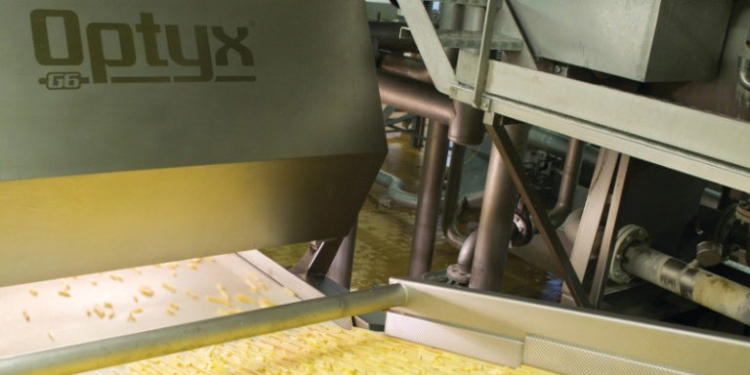Whether sorting potato chips/crisps or wet potato strips, many of the same fundamental strategies apply. In this article, John Kadinger will cover some of the highlights.
One objective in digital sorting is to achieve grade by removing foreign material (FM) and defects to match final product specifications. Another is to maximize yields by minimizing the removal of good product. The challenge is achieving these objectives simultaneously in light of the inherent trade-off with any sorter to generate more false rejects as more FM and defects are removed. Referred to as “the good-to-bad ratio,” improving this performance is the goal of virtually every sorting system.
Sorting as a System
The key to developing the ideal sorting system is to consider the elements within the sorter as well as the system as a whole, which includes the mechanical grading, the shakers that feed the sorter and the collection shakers, for each application. The major steps within the sorting system include singulating, stabilizing, analyzing, separating and collecting.
Intelligent software
To analyze product, sorters use a combination of cameras, lasers or new hyperspectral imaging to scan objects and create images that are compared to the accept/reject definitions set by the user. This comparison is achieved with algorithms that the sorter supplier has created for each application. Cameras are typically best at distinguishing color, size and shape, while lasers are better at detecting foreign material (FM). Hyperspectral imaging recognizes the unique biological and chemical characteristics of objects, which allows it to identify invisible defects such as sugar ends.
High performance digital sorting is not achieved with technology alone. Deep processing knowledge is needed to design the ideal sorting system that meets each processor’s requirements. Expertise in product handling prior to the infeed and at collection, intelligent software that helps maximize the sorter’s performance and the implementation of a simple user interface are key criteria to consider when selecting the most qualified supplier.
Read the whole story, including insights on Intelligent sorting, minor defects and more, in Potato Processing International, July/August issue (4).








